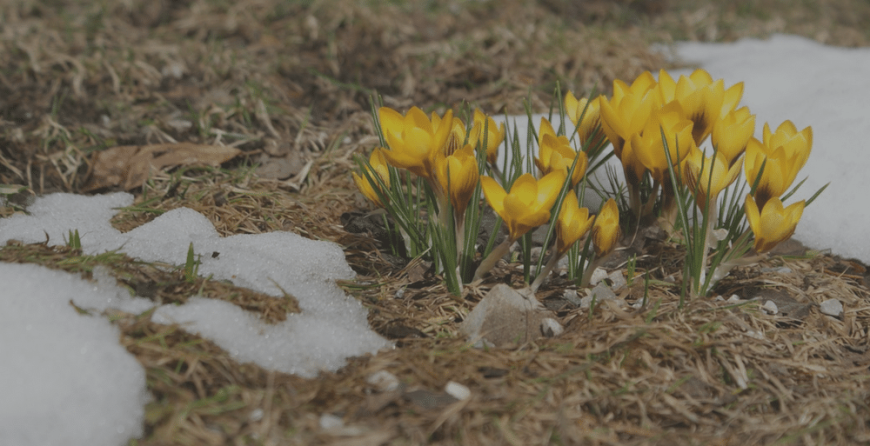 When the sun starts shining brightly again and the air starts warming up, you’re probably anxious to get back in your garden. Whether this is your first garden or your thirty-first, there are some easy ways you can ensure your organic garden is ready for spring.
When the sun starts shining brightly again and the air starts warming up, you’re probably anxious to get back in your garden. Whether this is your first garden or your thirty-first, there are some easy ways you can ensure your organic garden is ready for spring.1. Do a quick clean-up
During the colder months, your organic garden is exposed to a variety of things including the elements, storms, and the occasional critter. A great way to start fresh is to clean up your garden by clearing away all of the broken branches, leaves, and other debris that piled up during the winter. Don’t wait too long to clear all of the unwanted junk from your garden bed because your spring plants and bulbs should start growing any day now. In other words, the sooner you clear away the debris from your garden bed, the less likely you are to stand on one of your growing plants, causing them damage in the process.
This same cleanup routine should be applied to your bushes and trees too. Be sure to trim away any broken, damaged, or dead branches as the springtime is an excellent time for pruning and shaping trees and bushes.
2. Gather your gardening tools
Unless you’ve been tinkering around in your organic garden throughout the winter, your tools have probably just been collecting dust for several months. Before you jump in and start transferring plants and seeds, be sure your tools are ready for the job. Give them a good scrub with soap and water. To maintain your tools with wooden handles, use mineral spirits to prevent the wood from splintering and aging. Feel free to do this as needed, making sure you clean them at least every spring and fall. If you’ve had a particularly productive day, and they’ve collected a lot of dirt, clean your garden tools then as well.
3. Prep your soil
Every experienced gardener is going to tell you that healthy plants come from healthy soil. Your organic garden is no different. Before installing plants into your garden, you’ll need to make sure your soil is ready for planting. To prep your soil, turn it over with a pitchfork, giving it a thorough raking session. Be sure to clear away any weeds that have grown during the winter. To make sure your organic plants have the nutrients they need, add compost from your compost bin or pile. If you don’t have a compost pile, just use store-bought compost or manure. Planning ahead is key, as you’ll want to avoid adding compost right before planting. Make sure your soil has time to mix well with the compost so the roots of your new plants don’t burn out.
4. Create a blueprint
If you’re unsure what organic flowers, plants, or vegetables grow best in your region, take a look at this zoning map. This will give you an idea as to what plants will thrive in your geographic location, which will produce fewer headaches for you during the gardening season. If you still have questions, stop by your local nursery or planting store to get recommendations from the experts. Once you’ve done this, start planning out what plants you’ll add to the garden as well as their color. Feel free to mix perennial flowers with some annuals to keep color in your yard longer. If you’re feeling particularly creative, you can draw a rough outline of where you’ll place what plants. When doing this, keep in mind that you’ll want to plant things according to height so the taller plants don’t prevent the sun from shining on the shorter ones.
5. Maintenance, maintenance, maintenance
During the gardening season, you’ll need to stay on top of things, which is why upkeep is a big deal. As soon as your flowers start blooming, you’ll need to start promoting other flowers. This is also a good time to plant annual flowers to fill the void as perennials start to fade. Do your fair share of “deadheading,” which is the process of cutting off the drooping or fading flowers.
In the late spring just before summer kicks into high gear, take the time to put down a thick layer of mulch. This will help your garden ward off weeds and keep water in. This same layer of mulch will also break down during the fall and winter, which will add good nutrients to the soil that will carry over into the next season.


